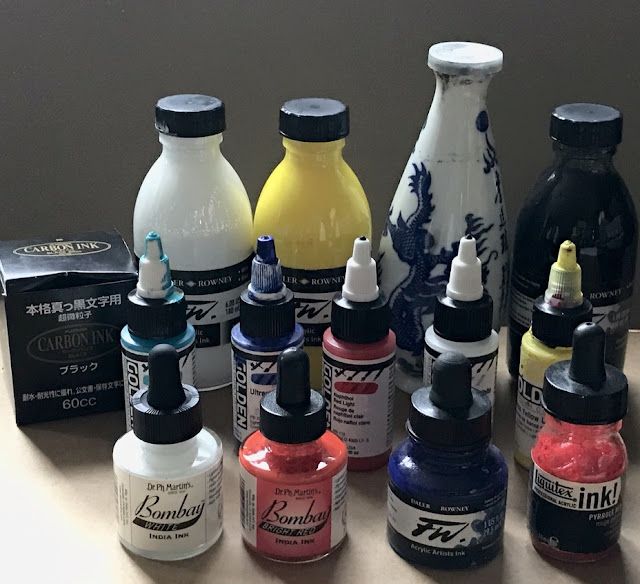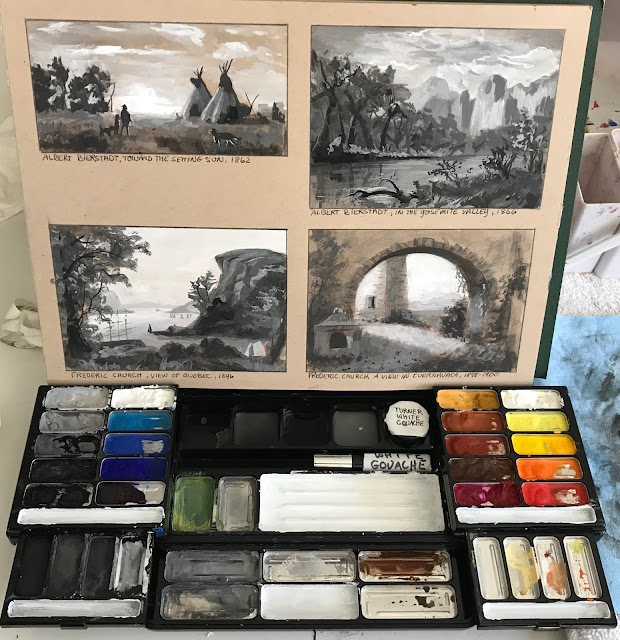 |
| Watercolor over thin white gesso layer, calligraphy marker |
For many years, at least a portion of my sketches have been done in old books that I've repurposed as sketchbooks. A lot of friends have been asking me about my process for reusing old books as art journals, so this post is for you....and anybody else who wants to know!
The images in this post are from a 9x12" old hardbound music book, so the two page spread gives me a 12x18" painting surface. This size is a bit cumbersome to take out on location, so I have also collaged in some paintings/sketches done on location, or on other types of paper that I wanted to experiment with.
 |
These two facing pages were lightly sized with white gesso. A small plein air painting was collaged
onto the left side. Watercolor and gouache were used to paint the Red-winged blackbirds from photos
I took at the scene, and capture the feel of the marshy location. |
I generally start with a well-constructed, stitch-bound book that can open completely flat. I like books that are more than just text, contain some kind of graphic content, some blank areas, and do not have glossy paper. Although it's nice if the pages are thick, they don't have to be. The book can be hardcover or softcover. You can also use these steps to transform a traditional sketchbook into something that can accommodate heavy media use. So far I've used mostly hardcover books because I put them through a lot of abuse! Choose a size and format that will work for you. Is it for studio experimentation, or will you want to carry it around? Page size, book weight, paper thickness, content, and number of pages are all critical factors.
 |
| Watercolor, applied directly onto the pages (no sizing) |
You might have some great, old books lying around the house. If none match exactly what you're
























